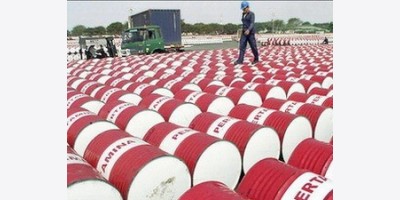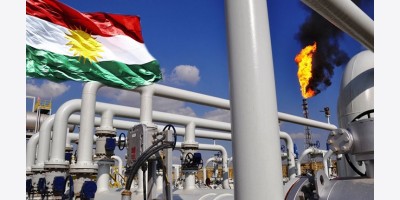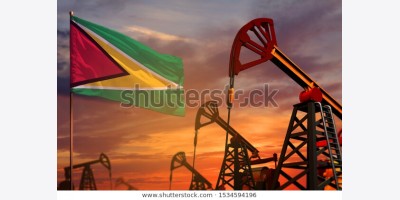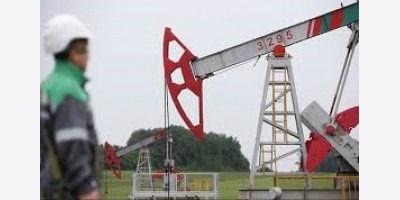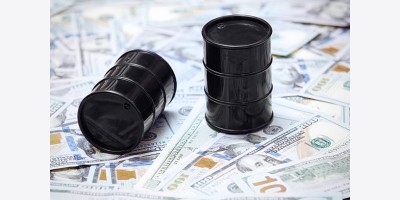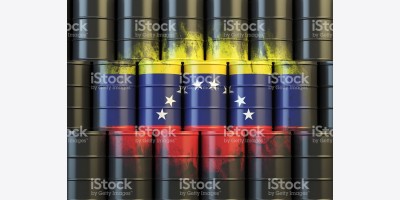As crude oil production in North Dakota exceeds 1 million b/d, Senator Heidi Heitkamp, Democrat-North Dakota, told Platts Monday that rail will always be the prominent mover of the state’s oil output to market, even as more pipeline infrastructure is developed. “I don’t think we’re ever going to replace crude on the rails,” Heitkamp said in an interview, pointing out that pipeline infrastructure would take years to develop and would be unable to keep up with growing production in the state.
Even if the Keystone XL pipeline is built it would likely move less than 10% of North Dakota’s oil and would be limited by low demand in the Gulf for Bakken Shale crude, Heitkamp said.
Heitkamp, the former director of the Dakota Gasification Co.’s Great Plains Synfuels Plant, said she expects production in North Dakota to soar in the coming years as the Three Forks formation is developed and enhanced oil recovery methods take hold.
But a spate of recent derailments, including a CSX train carrying Bakken crude that derailed and caught fire April 30 in Lynchburg, Virginia, and July 2013’s deadly derailment and explosion in Quebec, may be putting thatfuture production at risk, she said. “I think everybody needs to be concerned,” Heitkamp said. “Obviously, if we aren’t able to move the crude, it’s going to be very difficult to continue to produce crude.”
Roughly 90% of the crude moved from North Dakota’s Bakken formation is moved by rail, she said. Heitkamp said the federal government needed to quickly implement new rail safety
“We are not going to have a world where we prevent every derailment,” she said. “We need to have a tank car that is as puncture resistant as we can make it.”
Four years after the Macondo oil spill, BP has 11 operated rigs running in the US Gulf of Mexico, the most the company has ever had there at one time, BP America’s CEO said Monday.
BP will spend $10 billion over the next five years in the deepwater US Gulf, which amounts to about 10% of its worldwide exploration and production budget and makes the company the largest investor in that arena, said John Minge, who is also BP America’s chairman and CEO.
“Our business is back; it’s strong and it’s gaining momentum,” Minge said. “It wasn’t long ago when the common belief was that the region was played out, that deepwater wasn’t going to work and it was better to head off to other places. But we had [employees] who said there’s more there, and convinced the leadership to invest further.”
Minge was enthusiastic over energy reforms in Mexico that could lead to new opportunities for the company in that country, particularly in the upstream deepwater. Mexico’s so-called “secondary legislation” on energy reform— the fine print and terms — was sent to the Mexican Congress last week for approval later this year.
The first bid round is expected in mid-2015. “We’re excited about developments in Mexico, particularly offshore,” he said at the opening of the Offshore Technology Conference in Houston. “We think the resource base will be similar to what we’re exploring on the US side of the border.”
Not only is BP the largest investor in the deepwater Gulf of Mexico, it also is the largest leaseholder there, with about 620 blocks, Minge said.
The company has explored in waters of 1,200 feet deep or greater since the mid-1980s. On April 20, 2010, the BP-operated Macondo deepwater well offshore Louisiana blew out, causing the US’ largest offshore oil spill.
As a result, deepwater exploration came to a virtual standstill for about nine months while the federal government formulated and implemented stricter offshore regulation.
Moreover, in late 2012,
Kosmos Energy has suffered a setback in its Moroccan exploration efforts, with a well targeting a big offshore prospect proving dry, the US company
The high-risk, high-reward wildcat well in which BP and AIM-listed Fastnet Oil & Gas are minority partners, had been targeting 360 million barrels of oil-equivalent resources. Though the well failed to find commercial hydrocarbons, Dallas-based Kosmos said it encountered oil and gas shows while drilling and in sidewall cores suggesting the presence of a working petroleum system.
Elsewhere in Morocco, Kosmos said a 4,300-sq-km 3D seismic program over the Essaouira and Tarhazoute offshore blocks is expected to be completed late in the second quarter. “Looking to the future, we are encouraged by the quality of our exploration portfolio as we mature the prospects to the drilling stage from recently acquired 3D seismic,”
Kosmos Chairman and CEO Andrew Inglis said. “We plan to drill a series of potentially play-opening exploration wells, with the next spud targeted for late 2014.” Once ignored by the energy sector in favor for OPEC members Algeria and Libya, Morocco has been more recently on the radar, with companies over the past two years snapping up rights to explore offshore blocks.
Lured by the attractive fiscal regime and political stability relative to other parts of North Africa, Morocco’s oil and gas industry is increasingly attracting the interest of both independents and majors. After modest interest over the past 10 years, 2013 saw a number of significant entrants to both onshore and offshore licenses. BP, Chevron, Kosmos and Cairn have all announced new projects or farm-ins in the past year, demonstrating a rapid increase in corporate appetite for the region.
But two exploration wells late last year, drilled by Cairn Energy and Genel Energy failed to find commercial quantities of hydrocarbons.
Growth in US commercial crude stocks is expected to have continued last week, with analysts surveyed Monday by Platts calling for a 1.3 million-barrel build.
The American Petroleum Institute will release its weekly report at 4:30 pm EDT (2030 GMT) Tuesday and the US Energy Information Administration is scheduled to release its weekly data at 10:30 am EDT (1430 GMT) Wednesday.
The build will likely be tempered by an increase in crude runs in US refineries, especially on the US Gulf Coast. Analysts surveyed expect total US refinery utilization to have risen 0.5 percentage points for the week ended May 2. At 92.9% of capacity for the week ended April 25, there is still room for USGC runs to build, which would likely slow the steady growth inregional crude inventories.
USGC refineries often operate in the mid-90% range during the lead-up to summer demand, and were as high as 94.3% of capacity as recently as the week ended January 3. Platts data shows a fluid catalytic cracker at Motiva’s 600,000 b/d Port Arthur, Texas, refinery — the largest in the US — was started up last week following planned maintenance.
Despite the return of a likely massive unit, Platts data also shows that many US Gulf Coast refineries took units out of production, which will likely check the week-on-week growth in runs. In Texas, Citgo shut the 77,400 b/d No. 2 fluid catalytic cracker in the east section of its 165,000 b/d Corpus Christi refinery for repairs following regenerator line leak. An 23,000 b/d FCC at Alon’s Big Spring refinery, also in Texas, was shut last week due to planned maintenance.
Further, issues with the No. 3 FCC at Marathon’s 475,000 b/d Galveston Bay refinery led to flaring last week, although it was unclear if production was impacted. In the Midwest, an 81,100 b/d FCC at Flint Hills Resources’ Pine Bend refinery in Rosemount, Minnesota was shut last week for maintenance, with market sources describing the outage as “major.”
On the East Coast, Monroe Energy shut an FCC at its 185,000 b/d Trainer, Pennsylvania, refinery. The most recent EIA data for the week ended April 25 shows US crude inventories at 399.36 million barrels is the highest on record. The bulk of this steady inventory building has come along the US Gulf Coast where stocks there alone hit 215.28 million barrels for the week ended April 25, also highest on record. This has largely been a factor of steady southward flows out of Cushing, Oklahoma, where stocks have fallen more than 38% since mid-January.
Crude futures settled lower Monday, weighed down by disappointing Chinese economic data, and expectations that already high US inventories expanded again last week.
ICE June Brent settled 87 cents lower at $107.72/b. NYMEX June crude settled 28 cents lower at $99.48/b. The Brent-WTI spread narrowed to $8.24/b by Monday’s settle from $8.83/b on Friday.
In refined products action, NYMEX June ULSD settled 1.59 cents lower at $2.9064/gal and June RBOB ended 3.53 cents lower at $2.9092/gal. Oil futures and equities dropped after HSBC reported that Chinese manufacturing contracted for a fourth consecutive month in April, increasing concerns that China’s economic slowdown is expanding.
Tim Evans, a commodity analyst at Citi Futures Perspective, said NYMEX crude saw somewhat limited downside, suggesting traders were divided over whether to bank on tight Cushing, Oklahoma, inventories as support for the market or anticipate a decline based on rising US total commercial crude oil stocks.
After a rally on Friday that Evans said was motivated by worries about possible developments in Ukraine over the weekend, the oil complex was on the defensive Monday, implying that the weekend events were not much different than anticipated. Mike Fitzpatrick of the Kilduff
Report also noted that the continued crisis in Ukraine cuts both ways, in terms of its effect on the price of oil. “The damage to the eurozone economy is a decided negative, and the sanctions regime, as it evolves, will curtail economic activity within Russia and Europe,” he said. “Of course, the flip-side is Russia’s supply of oil
For RBOB, expectations that more crude oil moved last week from the NYMEX delivery hub at Cushing to the US Gulf Coast put pressure on RBOB futures. “That means that more refineries are running a lot higher and after the previous big 10 million b/d production (including blending) of gasoline, we’re going to see an even bigger number this week,” said Carl Larry, president of Oil Outlooks, referring to Energy Information Administration data scheduled to be released Wednesday morning.
Gene McGillian, an analyst at Tradition Energy, said a lack of a pick-up in motor fuel demand in the US, coupled with the return of refiners from maintenance and growing production kept RBOB under pressure. Despite the decline, front-month RBOB remains well above the key 100- and 200-day moving averages at $2.8257/gal and $2.7892/gal, respectively.
Bill Baruch, senior market strategist at iiTrader, said RBOB futures were lower on technical considerations having rallied last week.
Prepared by Prepared by James Bambino, Platts Oil Futures & Options Editor
With Staff Reports
New York - May 5, 2014
Platts Survey of Analysts
Crude oil stocks up 1.3 million barrels
Gasoline stocks down 900,000 barrels
Distillates stocks up 1.5 million barrels
Refinery utilization, or run rate, or run rate, up 0.5 percentage point to 93.4% (EIA)
Growth in U.S. commercial crude oil stocks is expected to have continued during the week ended May 2, with analysts surveyed Monday by Platts calling for a 1.3 million-barrel build.
The American Petroleum Institute (API) will release its weekly report at 4:30 p.m. EDT (2030 GMT) Tuesday, and the U.S. Energy Information Administration (EIA) is scheduled to release its weekly data at 10:30 a.m. EDT (1430 GMT) Wednesday.
The build likely will be tempered by an increase in crude oil runs in U.S. refineries, especially on the U.S. Gulf Coast (USGC). Analysts surveyed expect total U.S. refinery utilization to have risen 0.5 percentage point during the week ended May 2.
At 92.9% of capacity for the week ended April 25, there is still room for USGC runs to build, which would likely slow the steady growth in regional crude oil inventories. USGC refineries often operate in the mid-90% range during the lead-up to summer demand and were as high as 94.3% of capacity as recently as the week ended January 3.
Platts data shows a fluid catalytic cracker (FCC) at Motiva's 600,000 barrels per day (b/d) Port Arthur, Texas, refinery -- the largest in the U.S. -- was started up the week ended May 2 following planned maintenance.
Despite the return of a likely massive unit, Platts data also shows that many USGC refineries took units out of production, which will likely check the week-over-week growth in runs.
In Texas, Citgo shut the 77,400 b/d No. 2 FCC in the east section of its 165,000 b/d Corpus Christi refinery for repairs following a regenerator line leak. A 23,000 b/d FCC at Alon's Big Spring refinery, also in Texas, was shut the week ended May 2 due to planned maintenance.
Further, issues with the No. 3 FCC at Marathon's 475,000 b/d Galveston Bay refinery led to flaring the week ended May 2, although it was unclear if production was impacted.
In the Midwest, an 81,100 b/d FCC at Flint Hills Resources' Pine Bend refinery in Rosemount, Minnesota, was shut the week ended May 2 for maintenance, with market sources describing the outage as "major."
On the East Coast, Monroe Energy shut an FCC at its 185,000 b/d Trainer, Pennsylvania, refinery.
CRUDE OIL INVENTORIES AT RECORD HIGHS
The most recent EIA data for the week ended April 25 shows U.S. crude oil inventories at 399.36 million barrels is the highest on record.
The bulk of this steady inventory building has come along the USGC where stocks there alone hit 215.28 million barrels the week ended April 25, also the highest on record. This has largely been a factor of steady southward flows out of Cushing, Oklahoma, where stocks have fallen more than 38% since mid-January.
At 25.43 million barrels for the week ended April 25, Cushing stocks are more than 35% below the EIA five-year average.
GASOLINE STOCKS TO FALL, DISTILLATES TO BUILD
U.S. gasoline stocks are expected to have fallen by around 900,000 barrels the week ended May 2 amid an expected seasonal demand increase.
Recent U.S. employment data should be bullish for New York Mercantile Exchange (NYMEX) RBOB as well as for a further tightening of inventories, according to Oil Outlooks President Carl Larry. U.S. non-farm payrolls increased by 288,000 jobs in April while the unemployment rate fell 0.4 percentage point to 6.3%, according to data released Friday.
"Watch for the odd drop in exports last week to get back to normalcy and domestic demand catch up with all of the new workers in the economy," Larry said. "The weather has thawed enough to get people up and out."
U.S. distillate stocks are expected to have risen 1.5 million barrels the week ended May 2 amid an expected, but slight, downturn in U.S. product exports.
Platts cFlow ship-tracking software shows export activity was minimal the week ended May 2, with numerous vessels having left the USGC region unladen, en route to Europe and Latin America.
"If we're talking about a loss of exports, this is where it makes more sense," Larry said. "We've heard plenty about the weak demand in Latin America, and that's going to take its toll."
5 May 2014, 8.00 pm GMT
Houston, 5 May (Argus) — US Gulf of Mexico oil and gas output will grow to new heights in coming years as billions of dollars in past spending translates into dozens of new deepwater wells.
Gulf production dipped to about 1.3mn b/d of oil equivalent (boe/d) in 2013, down from a peak of 1.8mn boe/d in 2009, according to consultancy Wood Mackenzie. Much of the slowdown came from both the post-Deepwater Horizon drilling moratorium, as well as a shuffling of assets as some companies reassessed their offshore portfolios.
Production is expected to increase to 1.4mn boe/d in 2014, climb to 1.9mn boe/d by 2016 and peak at about 2mn boe/d by 2020.
BP is bullish on the Gulf of Mexico, said BP Americas chairman John Minge. The company plans to spend $10bn in the Gulf over the next five years as it increases production from about 200,000 boe/d to more than 300,000 by boe/d by 2018. The company has 11 drilling rigs in the Gulf, its largest number ever.
“A while ago many thought the deepwater was just not going to work out,” Minge said today at the Offshore Technology Conference in Houston. “Today the deepwater Gulf of Mexico has some of the highest margin barrels in our portfolio.”
Deepwater exploration and production has always been more costly than onshore. A single offshore well can cost more than $100mn to drill with little guaranty of a payoff, while onshore wells are $10mn or much less each, depending on the field where they’re being drilled.
But the potential payoff for an offshore well is far greater. Wells in North Dakota’s Bakken shale average about 130 b/d, according to state regulatory data, while a single well in Petrobras’ Cascade project in the Gulf, for example, produces 12,000 b/d.
But breaking even on the offshore can take many years longer than onshore, and not all companies have the patience to wait. That’s led a shuffling of assets in recent years as companies reassess their priorities.
US independent Apache sold its offshore business in 2013 for $3.75bn to Fieldwood Energy when it decided to put more emphasis on its onshore projects. Earlier this year Fieldwood, a portfolio company of private equity giant Riverstone, said it would pay about $750mn for offshore projects owned by SandRidge Energy. Another offshore explorer, Energy XXI, said this year it would pay $1.5bn in cash and stock for offshore specialist EPL Oil & Gas.
Spending on existing Gulf of Mexico projects is expected to top about $17bn this year, said Wood Mackenzie analyst Jackson Sandeen, peaking at $19bn in 2016.
Much of the spending it going toward projects that can tie back relatively easy to existing production platforms, Sandeen said, which means those dollars will translate to barrels relatively quickly.
tdf/dcb/fn
Send comments to feedback@argusmedia.com
by Kostis Geropoulos
05.05.2014 - 18:39
ATHENS – Libya can achieve an oil production of 1.3-1.4 million barrels per day within a few weeks once the security situation is under control, Libya’s deputy minister of oil and gas told New Europe on 5 May.
“Now we are talking about less than 300,000 barrels per day and we can achieve 1.3-1.4, which is within the [OPEC] quota,” Omar Ali Elshakmak, said, referring to the Organization of Petroleum Exporting Countries production ceiling.
OPEC output is currently capped at 30 million barrels a day, but the group plans to meet in Vienna on 11 June to review the figure. OPEC supplies 40% of the world’s oil.
Elshakmak was talking on the sidelines of a conference in Athens on Europe and the Arab World in the framework of the Greek EU Presidency. The session focused on the outlook for energy in the region.
The Libyan deputy oil and gas minister said that from an operational point of view it doesn’t take long to increase Libya’s oil production. “But clearly the security issue is the most important and as soon as this is under control we can achieve it within a few weeks,” Elshakmak said.
During the conference, Elshakmak, who is heading a Libyan oil and gas delegation to Greece, noted that the pipeline linking Libya with Italy guarantees Libya contribution to ensuring the supply of energy to European countries.
He told New Europe that, due to Libya’s proximity to the Mediterranean, “Europe is the first direct market. On the other hand, we have no limitation. Once we have opportunity, we have chance for opening new markets is Asia, any other countries”. He also did not rule out co-operation with Russia.
During his speech Elshakmak tried to reassure foreign energy investors that “all transactions are based on transparency. We have full respect to the existing international agreements”. He stressed that the Libyan government doesn’t want any disruptions in the North African country’s collaborations with companies and countries from abroad.
On the sidelines of the conference, he explained to New Europe that he was referring to “the existing contracts and agreements with our partners. For the future, we’ll have a new round for exploration. That’s after we have finalised the legalisation of the oil and new Libyan updating of the Libyan oil law and some other regulations”.
Following the blockade in Eastern ports and strikes and occupations in Western oil fields, Libya’s oil production has fallen below 300,000 barrels a day. But there have been signs of progress in restoring some of Libya’s oil output as tribesmen ended a blockade of the El Sharara oilfield.
Hopes that production at El Sharara can be resumed, which would significantly increase Libyan oil production, outweighed rising tension in Ukraine, lowering oil prices.
On 5 May, Brent crude for June delivery was 80 cents lower at $107.79 a barrel by 1332 GMT, after settling 83 cents higher on 2 May. US crude was down 10 cents at $99.66, having risen 34 cents on 2 May.
But tensions in Ukraine limited the decline in prices. On 2 May, Russia threatened to cut natural gas supplies to Ukraine in June if it receives no prepayment in an escalating row between Moscow, Ukraine and the European Union over energy supplies, raising concern that energy supplies to Europe could be affected. Russia supplies about 30% of Europe's gas needs, and almost half of that passes through Ukraine. Russia also ships crude oil through Ukraine to countries in Eastern Europe via the Druzhba pipeline.
By James Burgess | Mon, 05 May 2014 21:29 | 0
A bipartisan coalition of U.S. senators is trying to rally support for a bill that would bypass the White House and green light the controversial Keystone XL pipeline project.
Co-sponsored by Senators John Hoeven (R-ND) and Mary Landrieu (D-LA) and introduced on May 1, the legislation is essentially a construction permit for the project, and cuts out the State Department, under whose jurisdiction the project falls, completely.
So far, the measure has the support of all 45 Senate Republicans and 11 Senate Democrats. Sixty votes are needed for passage, so four more Democrats need to be persuaded.
There are several Democrats on the fence that the pro-Keystone XL group is trying to court, including Tim Johnson (SD), Michael Bennet (CO), Tom Carper (DE), Chris Coons (DE), Bill Nelson (FL) and Mark Warner (VA). Senate Majority Leader Harry Reid opposes the pipeline but has indicated he may allow the bill to come up for a vote.
The House has already passed a bill to approve the Keystone XL. President Barack Obama could still veto the measure if Senate supporters are able to rally the required 60 votes,
Meanwhile, the multi-year delay may force Keystone’s parent company, TransCanada, to lay off workers. “There will be several hundred [people] that will be impacted by this decision, both employees and contractors,” CEO Russ Girling said at the company’s annual meeting in Calgary. “At this point in time, there’s a very low probability that we would have a decision in time to meet this year’s summer construction period.”
By James Burgess of Oilprice.com
By MINING.com | Mon, 05 May 2014 22:05 | 0
Benefit From the Latest Energy Trends and Investment Opportunities before the mainstream media and investing public are aware they even exist. The Free Oilprice.com Energy Intelligence Report gives you this and much more. Click here to find out more.
Dutch designer Daan Roosegaarde and a team of other artists and engineers are developing a new, energy-friendly mechanism that sucks smog out of the air and transforms it into diamonds.
While in a small scale model for now, this giant sort of electronic vacuum cleaner will be tested next year in China's notoriously polluted capital, according to a press release.
The vacuum would be at a city park and would work by attracting smog particles into a tower fitted with ionic filters that charge and remove smog particles, blowing fresh air out of the equipment’s side vents. Copper coils buried underground would generate an electromagnetic field that attracts the smog particles.
“The great thing about the technology is that is safe,” Roosegaarde was quoted as saying by The Escapist. “It's already being used in hospitals and it's very energy-friendly, so to have 30,000 cubic meters of clean air purified, it only uses like 30 Watts, which is like a light bulb."
He added his invention would help by producing corridors of clean air that would allow the sunlight to shine through. The version he has planned for Beijing should have a cleaning diameter of about 50 metres, which would produce results almost immediately, he said. And the artist wants to take his plan one step further. Rather than waste all that smog, he wants to turn it into jewellery.
While the artist acknowledges his project is more of a way of drawing attention to the problem, rather than a viable solution to Beijing’s air pollution, he says the diamonds he could produce can be used to raise awareness.
“These [diamonds] can be used to create locally produced high-end rings. Each ring supports the cleaning of 1km3 of polluted air,”he says.
Man-made diamonds are nothing new. General Electric created precious stones in a lab in 1950s, presumably for commercial use. But it wasn’t until 1970 that the firm was able to produce gem-quality diamond crystals, their lengthy procedure made production rather unsustainable.
Roosegaarde is not new to innovative ideas either. The artist has already worked on several projects to recycle energy in unusual ways, such as a plan for a road that charges electric cars as they drive, or a floor that would generate electricity when danced on.
By Cecilia Jamasmie
Mon May 5, 2014 6:20pm EDT Print This Article [-] Text [+]
By Nia Williams
CALGARY, Alberta May 5 (Reuters) - Canadian exports of crude oil by rail rose 83 percent in the last quarter of 2013 from the same period a year earlier, Canada's National Energy board said on Monday.
With oil sands producers scrambling to find alternatives for congested pipelines, crude-by-rail exports jumped to 146,047 barrels per day in the final quarter, from 79,763 bpd in the same period of 2012.
In total Canada exports 2.6 million bpd but limited pipeline capacity can leave crude bottlenecked in Alberta, forcing producers to sell their oil at a discount. Last year heavy Canadian crude traded as low as $40 per barrel below U.S. benchmark prices.
The oil-by-rail boom has gathered pace because of environmental oppositions and regulatory hurdles to proposed pipelines to better-priced U.S. markets and Canada's Pacific Coast. In the first quarter of 2012 just 15,980 bpd were shipped out of Canada by rail.
Last month the U.S. government further delayed a decision on whether to give the go-ahead TransCanada Corp's controversial Keystone XL pipeline, now in its sixth year of waiting for regulatory approval.
A number of Canadian midstream companies are scrambling to take advantage of the delays facing pipeline companies by building new unit train terminals, that can load over 100 cars or up to 70,000 barrels of crude in one go.
Analysts estimate up to around 1.1 million bpd of rail loading capacity could be running in Western Canada by year-end, if terminals are built according to schedule. (Editing by David Gregorio)
Global oil to grow in 2014 – IEA
on May 05, 2014 / in Sweet Crude 11:01 pm / Comments
International Energy Agency, (IEA), has revealed a greater rise in Global oil demand than expected this year, according to a new forecast that found consumption grew by 91.2m barrels per day (bpd) in Q4 last year.
The forecast, in its monthly report on the oil market, said consumption accelerated by 135,000 bpd, buoyed by the recovery of advanced economies led by the US.
However, it noted the growth of Chinese demand slowed down in the second half of 2013, Agence France-Presse reported.
Highlighting huge changes in the undercurrents of the oil market despite stable prices, the IEA said that emerging economies were now driving growth of oil demand, but its monthly report focused strongly on a huge rise in US output.
This was accelerating debate about whether or not the US should lift a ban dating from the oil shocks of the 1970s on the export of oil, the IEA said.
In the 34 countries belonging to the OECD group of advanced democracies, and for the first time since 2010, “demand appears to have swung back into growth in 2013,” the IEA said.
It raised its estimate of global demand for oil in the last quarter of 2013 by 135,000 bpd to 91.2 million bpd “led by a significant upward revision of 700,000 bpd to the US demand assessment pegged to industrial fuels.”
It comes as Mohammad Khorsheed, General Manager of GE Saudi Innovation Centre, predicted an eight percent increase in energy efficiency practices will help save over SAR50bn ($13.33bn) over ten years, the Saudi Gazette reported.
A ten percent reduction in oil consumption within the Kingdom by 2030 will result in the release of 255 million barrels for export achieving additional revenue of $28bn a year, he said.
According to a GE study, the use of oil can be optimised through efficient technologies. Some 452 million metric tonnes of carbon dioxide were emitted in 2010 through power fuel consumption, while per capita carbon dioxide emissions stood at 16.5 tonnes.
As part of an $1bn investment commitment to the Kingdom, the company has unveiled its Saudi GE Innovation Centre in Dhahran Techno-Valley and also expanded its GE Manufacturing Technology Centre in Dammam.
By Joao Peixe | Mon, 05 May 2014 21:17 | 0
In late April, Slovakia signed an agreement with Ukraine to reverse the flow of natural gas, allowing Ukraine to receive gas shipments in the event that Russia decides to cut off supplies. The deal could eventually open up an annual 10 billion cubic meters of natural gas capacity.
About 40 percent of Europe’s gas from Russia flows through Slovakia, which makes the small country an important transit point for the Russian-European gas trade.
But Slovakia is under intense pressure from Russia to resist appeals for more help, according to a May 5 article in The New York Times.
Slovakia balked at tweaking its full pipeline system in order to assist Ukraine, only agreeing to use an unused pipeline to ship gas to Ukraine. The pipeline will receive upgrades and could come online later this year, but initially only at 3 billion cubic meters (bcm) of annual capacity, which is a tiny fraction of what Ukraine will need next winter if Russia decides to turn off its gas flows. Ukraine needs around 55 bcm per year, half of which comes from Russia.
Ukrainian officials have grown frustrated with what they feel is Slovakia’s unwillingness to help. Some say that Slovakian Prime Minister Robert Fico is too deferential to Russia and Gazprom. “We have been struggling for a long time to convince them to find a solution,” Andriy Kobolev, the chairman of Ukraine’s state-owned Naftogaz, told the newspaper. “We have now identified the problem, which was obvious from the beginning — restrictions placed by Gazprom.”
Slovakian officials are worried that Gazprom could raise natural gas prices, just as it did with Ukraine, if Slovakia helps Kiev too much. When asked about Gazprom’s position on reversing the flow of natural gas, Gazprom’s chief Alexander Medvedev said that such a move would “require the agreement of all parties involved,” meaning that Slovakia could not make a decision without Gazprom’s approval.
By Joao Peixe of Oilprice.com
International Business Times
By Sophie Song - After a decade of looking westward to Central Asia to secure access to energy supplies, China is shifting its gaze to the north, where it may buy a piece of land from Norway to gain access to the region’s rich resources and convenient shipping lanes.
Why China Wants To Buy Part Of NorwayWhy China Wants To Buy Part Of Norway
China may not be the only entity interested in purchasing the land, a fjord that's roughly three times the size of Hong Kong, in the Norwegian archipelago of Svalbard, which was recently put up for sale by the Norwegian government, the South China Morning Post reported on Wednesday. The privately owned fjord, still undeveloped, could potentially have 20 million tons of coal reserves.
“Arctic hydrocarbons constitute the final frontier of oil and gas development,” Emily Stromquist, an energy expert with the Eurasia Group, a political and economic risk consultancy, told International Business Times. “China’s rapidly growing energy demand, coupled with interests in more efficient Arctic shipping routes, have driven Chinese companies to seek new Arctic energy projects.”
But more important than potential coal reserves, simply owning the Svalbard property could give China, or any non-Arctic state, a platform for launching long-term Arctic exploration operations, as well as a permanent foothold in the region, said Willy Østreng, vice-president of the Norwegian Academy of Polar Research and a former director of the Fridtjof Nansen Institute, according to the South China Morning Post.
China's bid, if it it occurs, would not be unprecedented. In 2011, A Chinese property tycoon, Huang Nubo, tried to buy an even larger plot of land in Iceland in 2011, but his $200 million bid was blocked over Iceland's concerns that too much of the island would be in foreign hands. The China National Offshore Oil Corporation, a major state-owned enterprise, has also partnered with Iceland’s Eykon Energy firm to explore for energy resources off Iceland’s southeast coast, according to the Diplomat.
China is not alone in its drive to enter the resource-rich region, which contains more than 20 percent of the undiscovered global hydrocarbon reserves. Among the eight member-states of the Arctic Council, Russia is a key stakeholder in the region, as the Russian Arctic has been responsible for about 10 to 15 percent of Russia's gross domestic product, or GDP, and 25 percent of its foreign exports. The European Union nations, where 25 percent of all Arctic oil and gas is destined, and the U.S., have also emerged as major players in the region, according to a paper from the Finnish Institute of International Affairs.

China has expanded its operations in all directions around the globe in recent years to secure the energy supplies needed to fuel its rapid industrialization and growth. Chinese companies have invested heavily in foreign energy projects, including Sinopec’s investments in Canada and the North Sea, CNOOC’s acquisition of Nexen, and a Chinese-backed pipeline from Myanmar.
“Chinese state-owned companies have loomed large in auction processes for a number of years, particularly in the energy sector, and their success has resulted in considerable international expansion,” Darren Spalding, the energy partner at the law firm Bracewell & Giuliani, told IBTimes.
In recent years, many of China's energy and resource investments were made in Central Asia. On a recent tour of the region, President Xi Jinping signed a number of significant energy deals, including one that will increase China's gas supply from Turkmenistan by 25 billion cubic meters annually. Another investment in the region gave China an 8.33 percent stake, which amounts to $30 billion, in an oil project in Kazakhstan, and another one secured nearly $15 billion worth of oil, gas and uranium projects from Uzbekistan, according to the Huffington Post




